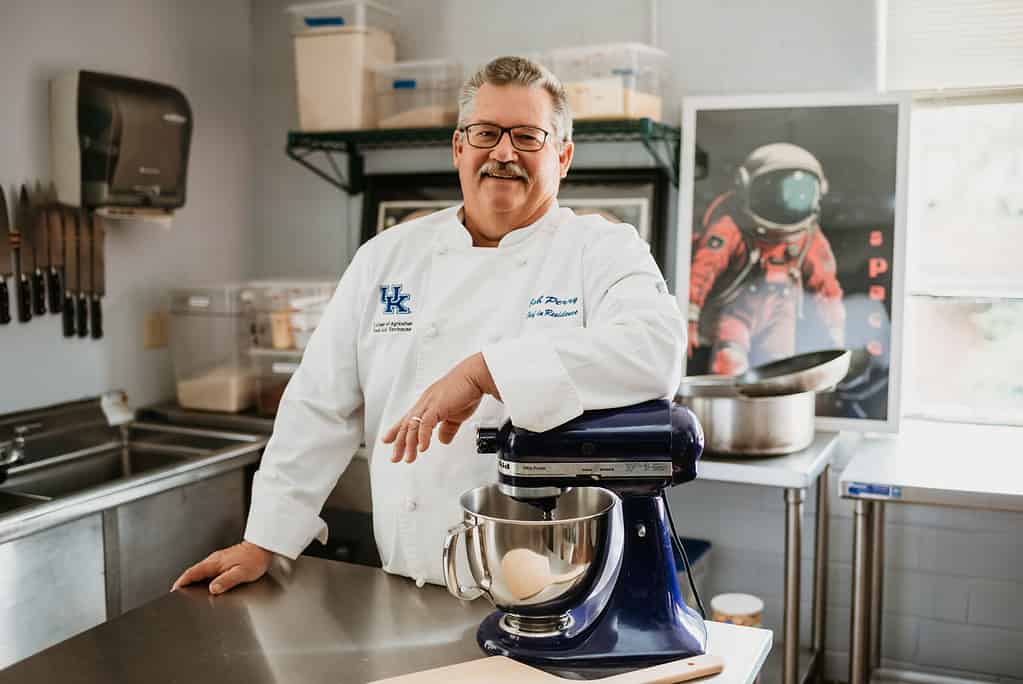
Imagine a deep space voyage that takes us beyond the confines of our home planet and onto Mars or even beyond the solar system. You might conjure images of very large spaceships and rockets, perhaps equipped with gravity-mimicking technology and sleek-looking astronauts on board. Maybe there’s a tractor beam or two.
But as you gaze through your holodeck to check up on our pioneering space travelers, you can’t help but wonder: ‘What’s for dinner?’
Venturing on years-long journeys through uncharted territory isn’t just about fancy space tech. It’s first and foremost a human experience. Here on Earth, the human experience is inescapably tied to the food we eat — and the same can be said about anywhere else humans might venture.
But as we all know, food isn’t just about hitting calories and macros. Yet there are also limitations. As we grapple with the complexities of space exploration, an innovative and lesser-known field of science known as neurogastronomy promises to elevate the meals of astronauts from mere nourishment to a full sensory experience, redefining space cuisine.
The space chef

Enter Bob Perry, a chef-in-residence at the University of Kentucky (UK). Beyond the stoves and pots of his campus kitchen, Perry works hand in hand with Humanity in Deep Space. This is a group dedicated to finding solutions to “the range of interconnected issues and hard challenges ranging from science to health to food” that we need to address if we’re ever to become an interstellar species.
“Long-duration space missions come with a psychological impact,” Perry said in a press release.
“Through pioneering research and flight experiments, neurogastronomy explores various fascinating areas.”
Neurogastronomy is a term coined in 2006 by Gordon Shepherd, a neurobiologist at Yale University. It is a burgeoning field of study that seeks to understand the complex relationship between the brain and our experience of food. To this aim, scientists employ a fascinating blend of neuroscience, psychology, and culinary arts that is reshaping our understanding of how we perceive and enjoy food.
In one recent study in this field, for instance, Pelin Tokat and İlkay Yılmaz explored how our brains interpret the signals received from our five senses to create the perception of flavor. They found that our perception of taste is influenced by everything from the design of the plate on which food is served to the ambiance of the dining environment.
In another study, researchers in Columbia explored the perception of different milkshake flavors using electroencephalography (EEG) and galvanic skin response (GSR). The researchers found that our perception of flavor is influenced by various sensory channels, including smell, taste, and sight.
Now, Perry — who is also the UK College of Agriculture, Food and Environment food lab coordinator and a founder of The International Society of Neurogastronomy — wants to combine neurogastronomy with his expertise in the kitchen to add a whole new dimension to dining in zero gravity.
Journey to the Red Planet: a culinary challenge
A manned mission to Mars is no walk in the park.
“The 300-million-mile journey to Mars takes about seven months each way. That’s up to three years away from Earth, with the vast uncertainties of how to sustain a crew’s physical and mental well-being,” Kris Kimel, a founding member of Humanity in Deep Space, points out.
The question isn’t just about how to feed the crew; it’s about how to maintain the balance between nutrition and the joy of eating. It’s about the practicalities of food in space and the intricate relationship between humans and what they consume.
“Understanding the relationship between the brain, the gut, and effects of long-term spaceflight is crucial,” says Kimel.
Part of the challenge of sustaining crews on such long missions is growing crops right then and there, aboard spacecraft. This comes with its own unique set of challenges, such as scaling production to meet the needs of a larger crew or simply the many unknowns that come with growing plants and microorganisms for food in a zero-gravity and radiation-exposed environment.
Adding spice to space
But it’s not just about growing the food. The unique space environment affects the microbiome and digestive processes, which is where astronaut gut health becomes a pivotal focus. By unraveling these complexities, researchers can devise diet strategies that optimize nutrient absorption and promote overall well-being.
There’s also great interest in devising novel food preservation and fermentation techniques for more nutritious and flavorsome meals for space travelers that can last years in storage.
It doesn’t stop here. Perry insists that food is more than just sustenance — and astronaut food should be no exception.
“The isolation and confinement experienced in deep space can profoundly affect human psychology,” he says.
“If you go back throughout history, you find a table where people gather to eat food in every single society. Zero gravity cooking tools and applications become essential instruments for spacefarers, enabling them to navigate the challenges and prepare meals in a microgravity environment. Astronauts must also connect through food even in these most extraordinary circumstances.”
Food in space isn’t just about survival. Creating a veritable dining experience can be paramount for boosting morale and preventing menu fatigue, a critical issue during extended missions.
“Palatability plays a significant role in ensuring astronauts consume sufficient food for their nutritional needs,” Perry said
While Perry’s focus is primarily on revolutionizing space food systems, the lessons learned can shape the future of food back on Earth. A sustainable closed-loop food system in space can inspire us to optimize food utilization, reduce waste, and cultivate nutritious meals, thus addressing issues of food scarcity and sustainability here at home.


